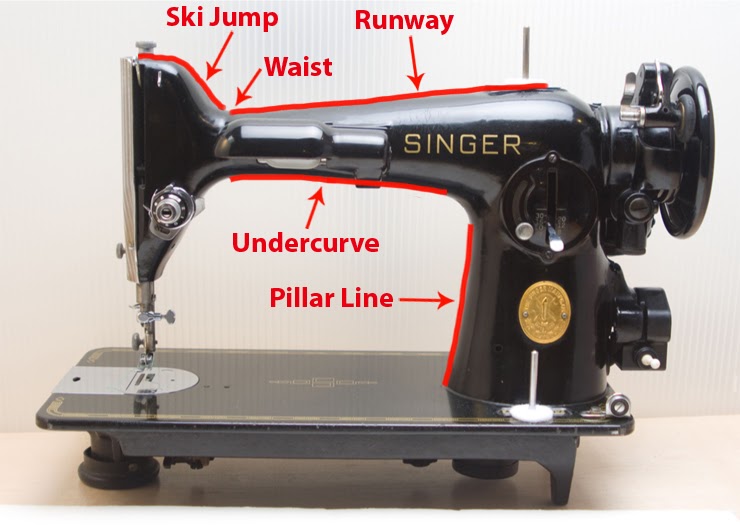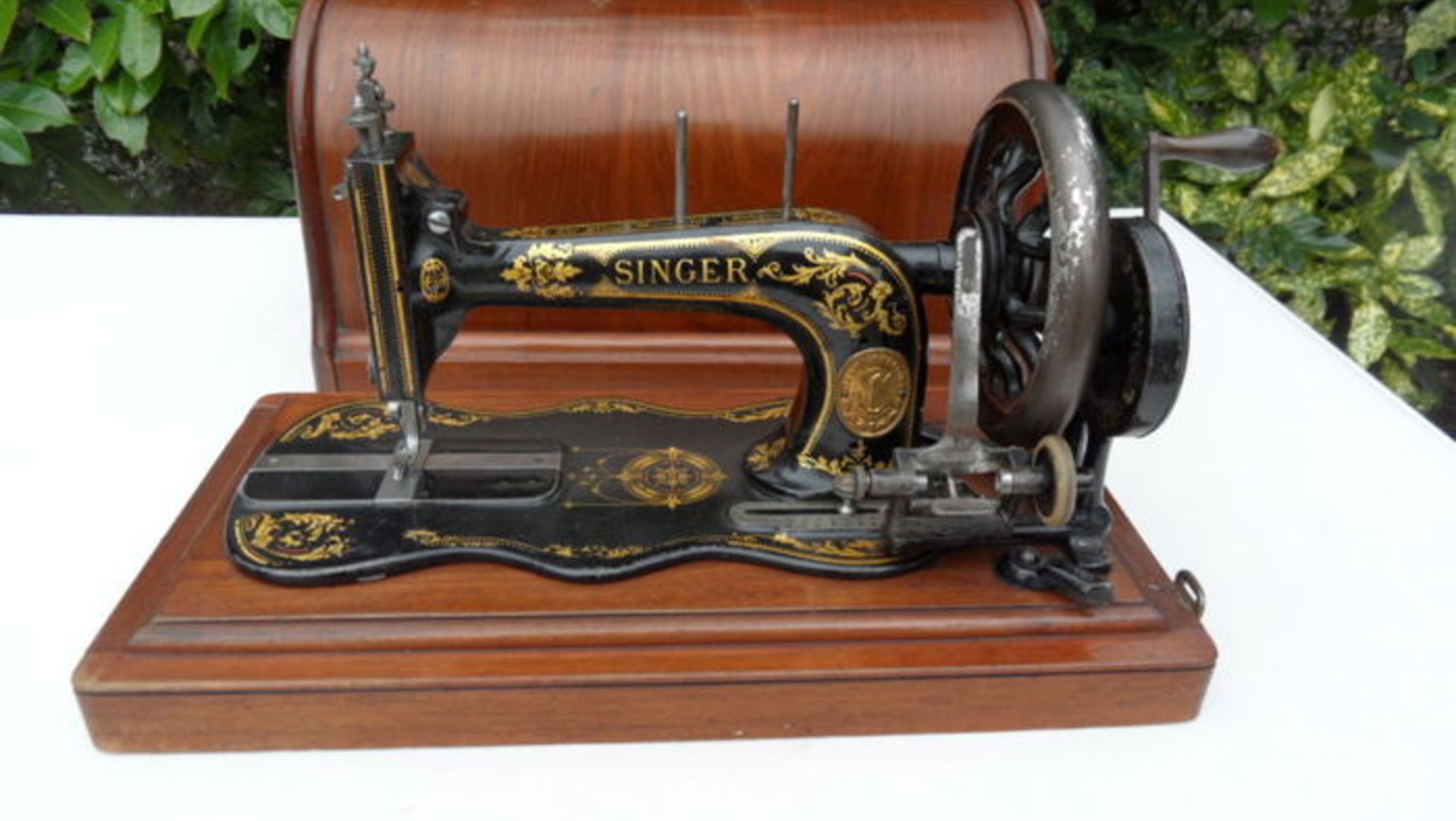In 1850 Isaac M. Singer envisioned the treadle, a cast-iron, foot-powered pedal, as a convenient, marketable device to power sewing machines. Although he did not invent the treadle or patent it, his New Family Model 12 (1865-1902) made the treadle machine affordable for approximately two million customers, according to International Sewing Machine Collectors' Society (ISMACS). This antique treadle model, just one among many, offered more manual freedom and greater control of fabric than previous hand-cranked models. To identify antique treadle machines, note design features, serial numbers and trademarks.
Recognize the basic components of an antique treadle machine, including the entire cast-iron treadle mount supporting the table top. Also note the foot pedal attached to a treadle rod and the treadle belt made of leather. A treadle machine has no electronic connection or plastic parts.
Examine distinctive design features. For example, a Kimball & Morton treadle, first manufactured in 1868, had an eagle and lion design on the treadle end casting, accompanied by the words “Strength and Speed.' The Singer name often appeared in cast iron above the treadle. Sometimes treadles hid within ornate parlor cabinets, designed more for show and status than hard work.
Locate a serial number on your machine to identify its age. Collectors, such as Berzack, collect antique treadles through the 1940s but focus on those produced before 1900. Some manufacturers, such as Singer, have extensive records about their serial numbers after 1870. The White Sewing Machine Company, a major rival to Singer after 1926, has less extensive records. Numerous sites, such as ISMACS, Singer or White can help with the identification of your antique treadle machine.
Identify Your Old Singer Sewing Machine Use the following instructions if you have a Singer hand-crank sewing machine or Singer treadle sewing machine only. First you need your machine's unique Singer Serial Number - You will find it embossed onto the metal body of the machine somewhere.
Search for a trademark on your pre-1950 treadle sewing machine but acknowledge its limitations. Years ago, distributors acquiring at least 100 machines would “badge” them with their own trademark or name, disguising the original manufacturer, including foreign imports. Sears placed its brand name on many machines, including the popular Franklin Rotary that the White Sewing Machine Company produced. In contrast, the Singer Sewing Company never put another distributor’s name on its products, according to Berzack’s interview in Collectors Weekly.
Differentiate among early Singer imitations when identifying your antique treadle machine. In 1894, the Goodrich Sewing Machine Company called one of its treadle machines the “Improved Singer.” Manufacturers even copied the “S” emblem from Singer. Many companies that sold their machines in the Sears Roebuck catalog copied early 1900 Singer models. For example, the Davis company imitated Singer’s attractive Memphis decals with an Egyptian equivalent. After using the Davis models, Sears switched to Domestic, a company that also replicated Singer designs.
Use the information you have gathered to assess the value of your machine or to find needed parts. The ISMACS website can provide you with comprehensive information about collections through its numerous links.
Identify Old Singer Sewing Machine By Serial Number

Identify Old Singer Sewing Machine
Tip

Rarity, rather than the age of an antique treadle machine, can reflect its value; a style produced in mass quantity may lack significant value.
Treadle machines have gained popularity with quilters who enjoy their control; others praise treadles as a way to burn calories as they sew.
Toy treadle machines, also made of cast iron, have become popular collector items.